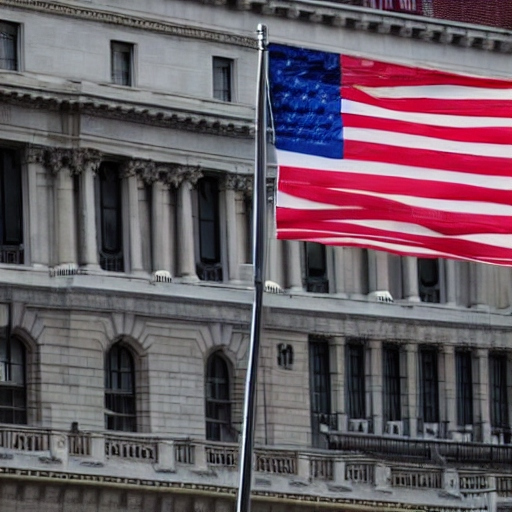The stunning collapses of Silicon Valley Bank, Silvergate Capital, and Signature Bank exposed flaws in the U.S. crypto banking industry, raising concerns about its future and the ability of the sector to expand domestically if this crucial infrastructure is not rebuilt. Since March, banks and authorities have significantly reduced their willingness to take on more risk in order to permit the integration of cryptocurrencies into the larger U.S. financial system.
During the 2008 banking crisis, cryptocurrencies received their big break. The bankruptcy of Lehman Brothers and other sizable institutions refocused regulatory attention on the too-big-to-fail banks and away from the smaller banks. The first block of bitcoin was traded in January 2009. An infrastructure of exchanges and freshly funded companies emerged as interest in cryptocurrencies increased, trade increased, and values skyrocketed. These cryptocurrency-focused businesses were flush with cash and wanted secure locations to store their money. Silvergate closed this gap and became the first American cryptocurrency bank in 2014. They initially saw impressive deposit and stock growth.
By 2021, Silvergate had transformed from a peaceful neighbourhood bank in La Jolla, California, with just over $1 billion in deposits to a $14 billion crypto-friendly banking institution. The San Francisco Federal Reserve, which served as Silvergate’s main regulator during this time, didn’t seem to be concerned about the company’s hypergrowth and concentrated industry risk approach. There have also been other banks that are ready to wager on cryptocurrencies.
In 2018, New York-based Signature entered the cryptocurrency market and saw a swift increase in deposits of digital assets, reaching $20 billion, or 20% of its funding base. Signature had grown to become the country’s largest crypto bank by 2022. To a lesser extent, Silicon Valley Bank also banked crypto, including Boston-based Circle, the world’s second-largest stablecoin manufacturer. This one consumer deposited nearly $3 billion in uninsured funds. They also banked Coinbase, the largest US-based exchange.
These banks also provided legitimacy in addition to lending, depositing, and money transfer services. This was beneficial to a sector of the economy that wasn’t known for having strict internal controls, proper board monitoring, or a focus on avoiding money laundering. The newly established financial system seemed to be setting up cryptocurrency for long-term, brisk growth.
In November 2022, the scandal-plagued FTX collapsed, sparking a domino effect that revealed these crypto banks’ lax safety and soundness procedures. Nearly $1 billion, or 9% of Silvergate’s total financing, was on deposit with FTX. Following the failure of FTX, they withdrawn all of their money from Silvergate and Signature Bank. This increased uneasiness among remaining depositors, and by the fourth quarter of 2022, several institutions were experiencing severe depositor runs. Silvergate failed on March 8, SVB on March 10, and Signature on March 12. The central US crypto banking industry was destroyed in four days. Other banks, such New Jersey-based Cross River Bank, continue to offer crypto services, but their extent and reach pale in compared to the three bankrupt financial institutions.
Regulators’ concerns about the possible impact that cryptocurrencies could have on the larger financial sector, including Credit Suisse and First Republic Bank, were further heightened by these unexpected collapses and depositor runs that extended to non-crypto banks as well.
It would be naive to assume that spreading the crypto risk among more banks would have prevented the bank panic that Silvergate caused. Contrarily, the systemic danger would have increased if additional banks had used the same subpar banking practices.
Regulators had already begun to cool on crypto banking before these March disasters. The risk to banks of pursuing clients who own digital assets was described in a joint regulatory warning from the Fed in January. The SEC has also adopted a more anti-crypto attitude, stepping up legal actions against Binance and Coinbase, the two biggest exchanges in the sector.
Venture capital funding for cryptocurrencies has decreased by more than 90% in the first half of 2023 and is not anticipated to increase anytime soon as a result of the industry’s cooling.
Crypto scandals, recent bank events, and increased regulatory scrutiny have produced a chokehold that, if it is not relieved, will stifle the industry’s expansion, curb innovation, and drive companies to more crypto-friendly jurisdictions like Switzerland, Singapore, and Puerto Rico.
Blockchain technology and other developments in the fintech sector have a lot of potential to offer more secure means of decentralized asset storage and transfer.
The crypto business needs funds and banks to expand. However, the sector must enforce stricter internal regulations and higher standards of conduct. Additionally, banks that operate in this area must adhere to stricter risk management guidelines. When correct banking procedures are used with cryptocurrency, the chokehold can be loosened. The regulatory freeze will end once regulatory confidence has been restored.








